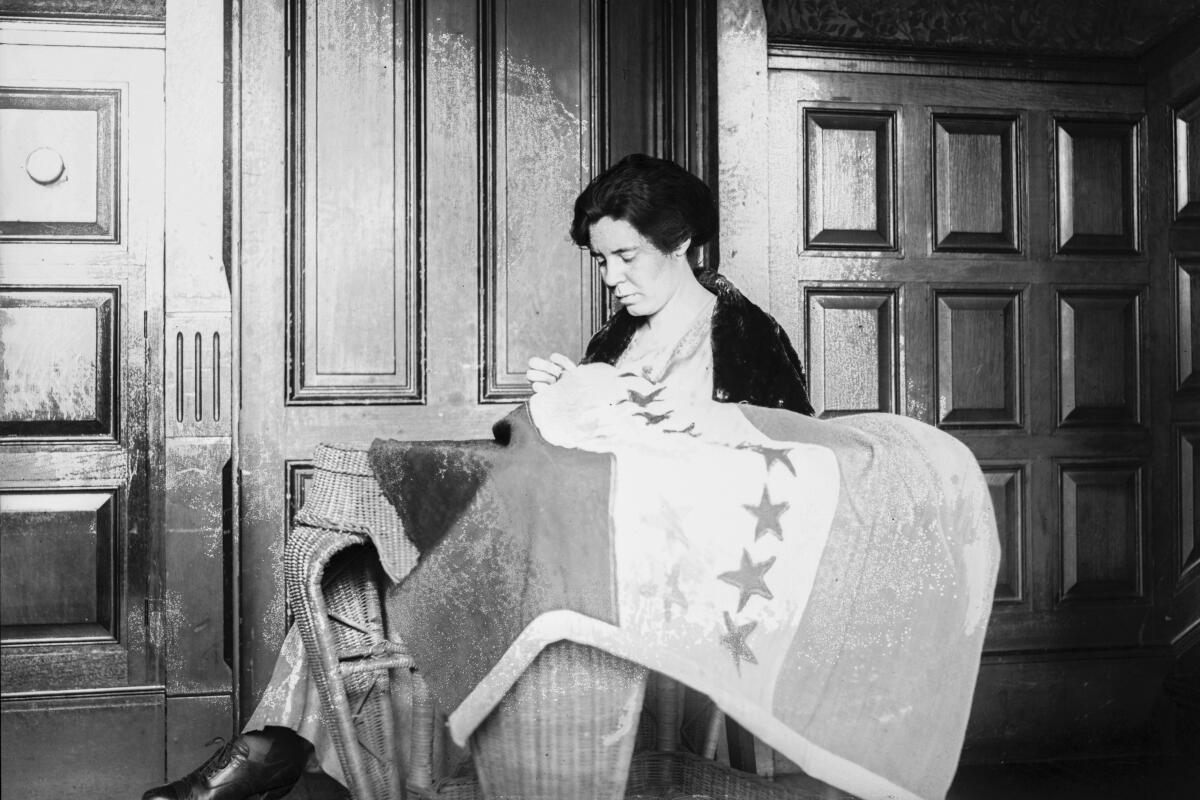Editorial: 100 years after winning the right to vote, women are still fighting for political equality

A woman named Shelly Tolhurst offered a sadly prophetic observation at a Sept. 7, 1920, event in Los Angeles celebrating the passage of a constitutional amendment guaranteeing women the right to vote. âFor a thousand years we have had a certain viewpoint,â Tolhurst said. âThis celebration marks the change of that viewpoint, but it will be a long time in coming about. We cannot change the psychology of the world in a day. But that change will be profound and lasting.â
Could Tolhurst and the other women commemorating the momentous occasion have imagined that, in the fantastically distant world of 2020, women would still be fighting for some of the same things â political power, equal treatment under the law and wage parity? Or that not one woman would have yet been elected to the highest political office? Would they be dismayed, as we are, that in 2020 women are subjected to the same sexist insults that were hurled at the suffragists who dared to suggest they should be treated as equals?
For the record:
10:52 a.m. Aug. 20, 2020Due to an editing error, this editorial incorrectly identified the speaker quoted in the first paragraph as Shelly Tolhurst. The speaker was Josefa Ann Hodgman Tolhurst, or in the style of the day, Mrs. Shelley Tolhurst.
Perhaps they could imagine it. After all, it had taken more than 70 years of struggle to reach that moment. The womenâs suffrage movement was birthed in 1848 during a meeting of like-minded women and men in Seneca Falls, N.Y., and might have faltered but for the determination of generations of women, including the courageous Black women whose contributions to the cause were too often overlooked by the history books. It wasnât until Aug. 18, 1920, when Tennessee became the 36th state to ratify it, that the 19th Amendment met the constitutional minimum for passage. (California had enfranchised its female citizens nearly a decade earlier; indeed, 21 U.S. states allowed women to vote as early as 1918.)
But it is likely that Tolhurst and her cohort would nevertheless be gratified to see that tremendous progress has been made with the help of womenâs voting power, even if true equality is still a long way off. There are laws requiring equal access to education and banning employment discrimination. The Equal Rights Amendment, authored by suffragist leader Alice Paul in 1923, has finally secured the ratification of the crucial 38th state needed for passage (though it is still mired in challenges because of an expired deadline).
A hundred and three years after Montana sent the first woman to Congress â Jeannette Rankin, a Republican and progressive (political parties have changed a bit over the last century as well) â 127 women currently serve in the U.S. House and Senate. Three female jurists sit on U.S. Supreme Court. This week, a woman of color, one who is not just Black but also Asian, is set to become the Democratsâ vice presidential nominee. And it is women who are seen as pivotal swing voters in the presidential election.
The political, social and economic parity the suffragists dreamed about a century ago has been long delayed, but it is coming. Letâs not put it off any longer.
More to Read
A cure for the common opinion
Get thought-provoking perspectives with our weekly newsletter.
You may occasionally receive promotional content from the Los Angeles Times.










